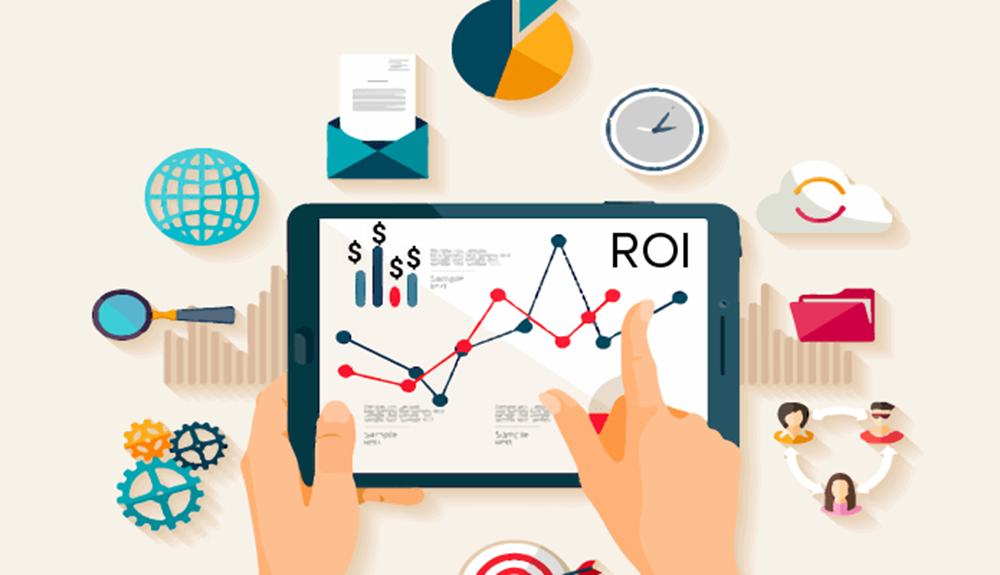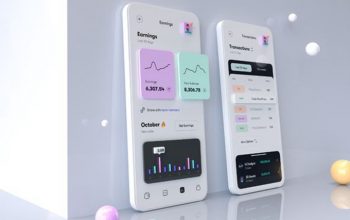With the fast adjustments in shopper conduct, and infrequently in surprising methods, corporations should higher anticipate and reply to new shopper wants and preferences. Our professional defined how.
For a lot of customers all over the world, a return to normalcy feels so shut, but so distant, in mild of the alarming unfold of COVID-19 variants. Though it’s unclear what the subsequent 12 to 24 months will deliver, what’s virtually sure is that customers gained’t merely revert to doing precisely what they did in 2019. In this episode, three consumer-behavior consultants share their insights into how customers’ spending patterns and buying behaviors are altering, and what corporations ought to do given these adjustments. An edited transcript of the dialog with government editor Monica Toriello follows.
Monica Toriello: Over the previous a number of weeks, folks in some components of the world have resumed their pre-pandemic habits. Perhaps you’ve not too long ago seen a film at a theater or flown on an airplane, and even simply stopped for a cup of espresso in your solution to the workplace for the primary time in over a 12 months. However a return to “regular” gained’t look the identical for everybody. Right now, we’ll hear from three individuals who intensively examine shopper conduct. They’ll share fascinating insights into how customers are altering and what corporations ought to do about it.
Kari Alldredge is a McKinsey accomplice primarily based in Minneapolis. Kari has been advising consumer-goods corporations for greater than 20 years on quite a lot of subjects, and he or she leads McKinsey’s work in consumer-goods development transformation. She is an writer of a number of articles, together with a latest one on COVID-19’s impression on demand and prices within the consumer-packaged items [CPG] trade.
Anne Grimmelt is a senior data professional in McKinsey’s Client Packaged Items Follow. She relies in Stamford, Connecticut. Anne has been one of many driving forces behind McKinsey’s consumer-sentiment survey, which was launched in 2008 and throughout the pandemic has expanded to 45 international locations. It gives a wealthy truth base for a way customers are feeling about their funds and the way their shopping for conduct is altering.
And our third visitor is Anjali Lai, a senior analyst at Forrester. Anjali, who relies in New York, helps chief advertising and marketing officers [CMOs] and different enterprise leaders to know the shifts in shopper conduct and shopper choice making after which to determine what these adjustments imply for the way forward for manufacturers and industries.
- Table of Contents
- consumer behavior
- buy keyword installs ios
- cheap ios app installs
- aso google play short description
A ‘reversal of fortune’ for large manufacturers
Monica Toriello: Kari, Anne, Anjali, it’s nice to have you ever right here immediately. All three of you’ve been maintaining your fingers on the heart beat of customers, each earlier than and all through the pandemic. Have there been any surprises? Are customers doing issues that you simply didn’t count on? Or is there something that gave the impression to be going a technique in, say, March or April 2020 however goes in a unique course immediately?
Kari Alldredge: In 2019 or early 2020, the subject on the minds of enormous branded consumer-packaged items producers was portfolio shaping: the right way to reimagine their portfolios, the right way to transfer away from center-of-store meals merchandise and massive manufacturers and as a substitute have interaction with customers in very totally different, extra focused, niche-oriented methods. The diploma to which the pandemic pushed folks again towards large manufacturers within the heart of the shop, and towards cooking at dwelling, has been a whole turnaround, a reversal of fortune, for big CPG corporations.
A few of these adjustments may have been anticipated, however others are fairly stunning: the notion that bread baking would turn into a phenomenon amongst millennials, or that pet possession would skyrocket to the extent that it has, and that those self same millennials could be prepared to spend greater than they spend on their every day Starbucks to feed their new pets.
So, a lot of these corporations that had been desperately trying to find development 18 months in the past now have the alternative drawback: their provide chains can’t sustain. The massive query for all of them is which of these shopper behaviors are really going to persist and be “sticky” popping out of this pandemic? Definitely, the canine that you simply adopted is more likely to keep at your own home. However if you return to ordering your every day Starbucks and spending $7 a day on a espresso, are you going to spend the identical quantity to feed your pet? These are the questions which can be on many firm leaders’ minds.
Anne Grimmelt: As Kari mentioned, we noticed a whole shift. Prepandemic, the expansion was in smaller, area of interest manufacturers, however early within the pandemic, it was massive CPG gamers that basically gained scale as a result of their merchandise had been obtainable on the shelf. They had been additionally manufacturers that we’re trusted by customers, so customers felt good shopping for them. For those who take a look at point-of-sale information from IRI or Nielsen, you see that enormous corporations—these with greater than $2.5 billion in retail gross sales within the US market—picked up a lot of the share development early within the pandemic, whereas smaller and midsize corporations, in addition to non-public label, had been actually not selecting up development.
Within the second half of 2020 and in early 2021, small and midsize corporations are regaining their gross sales development. And we count on that non-public label goes to be highly effective once more as a result of in the event you dive into the why—why did customers choose a brand new model, and why did they choose the manufacturers they selected?—it was about availability, it was about objective, however it was additionally about worth. It was about worth factors. Going ahead, worth goes to be much more necessary, and the non-public labels will achieve power sooner or later.
Belief as a strategic crucial
Monica Toriello: All three of you to some extent have written about buyer loyalty: the right way to win it and the right way to retain it, notably in an surroundings the place individuals are prepared to attempt new manufacturers. Anne and Kari, you discovered that 39 p.c of customers tried new manufacturers throughout the pandemic. And Anjali, in your analysis, you discovered that small manufacturers are notably good at incomes customers’ belief and consequently their loyalty. In a latest weblog publish, you wrote, “Now’s the time for corporations to embrace belief as a strategic crucial.” What does that imply? How ought to corporations do this?
Kari Alldredge: I’m seeing two attention-grabbing issues in response to the tendencies you simply talked about, Anjali. One is the diploma to which even comparatively mundane CPG corporations are occupied with the end-to-end shopper journey, together with shopper expertise pre- and postpurchase, as they attempt to perceive the right way to serve their current customers but additionally search for new methods to raised meet shopper wants. The notion that there’s a pre-and postpurchase expertise associated to a can of soda or a can of soup is a comparatively novel concept, proper? However, more and more, probably the most forward-thinking corporations are doing analysis throughout that whole journey to have the ability to perceive the wants of customers as they’re contemplating the vary of choices which can be obtainable to them—right through to satisfaction with utilization and even disposal of the packaging of merchandise.
One other attention-grabbing factor I’m seeing is a recognition that advertising and marketing is a dialogue and a recognition of the diploma to which customers now “personal” or form the narratives of many manufacturers. This, too, was occurring earlier than the pandemic however was vastly accelerated throughout the pandemic. The notion {that a} marketer positions the model and delivers a message and a promise to customers is admittedly changing into fairly an antiquated one, I feel, as customers themselves—by way of opinions, scores, blogs, movies, and social-media posts—form the id of many of those manufacturers. Suggestions from family and friends turn into a part of the model’s id and are vital to shaping each loyalty and shopper belief.
Anne Grimmelt: Our analysis corroborates that. We present in our analysis that about 33 p.c of millennial and Gen Z customers say they select to purchase a model from an organization that has their values, versus about 12 p.c of child boomers. However each demographic group is leaning towards that.
One other discovering from our analysis is the explanation why customers change to a brand new model. It’s positively the youthful era that extra typically signifies that it’s due to objective. It’s due to what the corporate stands for, the way it treats its staff, et cetera.
Goal: Greater than only a buzzword
Monica Toriello: We’ve been listening to rather a lot about objective and values, however I additionally hear some skepticism in sure pockets of the company world as as to if an emphasis on company objective truly pays off. As a result of there is an attitude-behavior hole, proper? What’s your response to a CEO who says, “Customers prefer to say they care about objective and values, however once they’re on the level of deciding to purchase one thing, they really solely care about comfort or worth or high quality. The aim is only a buzzword.”
Kari Alldredge: It’s essential however not ample. I feel there’s an growing recognition that alignment with a shopper’s values might put you within the consideration set however gained’t drive you over the road to buy. You continue to must have product superiority, whether or not that’s style superiority, practical superiority, or a price-to-value equation that works for that specific shopper.
We speak rather a lot concerning the pandemic, which positively shone a lightweight on well being generally, however there are different crises—like social justice and local weather change—which have come to mild over the previous 12 months and a half and which have actually shaken the company neighborhood. These crises have helped corporations perceive that a few of these components are elementary in how customers understand themselves and the world round them, to the purpose the place we now truly see some change occurring.
One of many issues that I used to be struck by was the velocity and seriousness with which most of the household-cleaning corporations responded to the pandemic and the heroic efforts to transform manufacturing capability to fabricate issues like wipes and sanitizer. Sure, a few of that was for monetary achieve, however I feel there actually was an virtually wartime mentality that I noticed corporations get new vitality from.
I take into consideration center-of-store meals producers who, pre-pandemic, possibly considered themselves as being a bit sleepy and never thrilling when it comes to attracting one of the best expertise. Now if you hear them discuss what they do, there’s actual pleasure in the truth that they fed America, or they saved America protected. It actually modified the best way they give thought to the significance of what they do.



